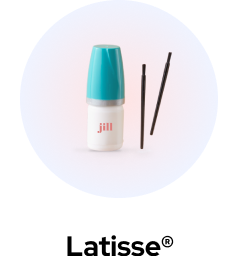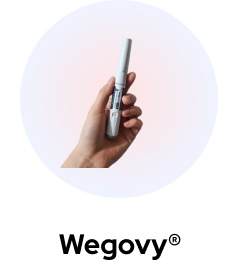If you are already taking or are considering starting Ozempic, you may know about the most commonly reported side effect that comes along with this medication: nausea. Nobody enjoys feeling nauseous, but how are you supposed to combat this side effect?
In this article we’ll cover:
- What Ozempic is
- What nausea is
- Commonly experienced side effects relating to nausea
- Other commonly experienced Ozempic side effects
- How to manage nausea while on Ozempic
- How to avoid Ozempic side effects
- Frequently asked questions.
Let’s dive straight in!
Ozempic is a once-weekly injectable medication marketed by Novo Nordisk and primarily used to help control blood sugar levels in people with type-2 diabetes. Its positive side effect is that it’s able to affect hunger receptors in the brain, which may aid those who are seeking weight management intervention. In Canada it is approved for this purpose in those with a BMI of 27 or higher.
It’s recommended that Ozempic should not be used alone for weight management, and should instead be used alongside other intervention measures, such as implementing a healthy diet and regular exercise into your routine. Not only will the drug be more effective, it will also help you in the long term, especially if you are on a shorter course of treatment and intend on stopping Ozempic.
Ozempic is part of the glucagon-like peptide-1 (GLP-1) receptor agonist drug class. It is able to utilize its active ingredient of semaglutide to target calls in the pancreas, along with a variety of different pathways, and bring about a range of benefits that can greatly aid patients in their weight management journey.
Semaglutide can provide benefits such as appetite suppression, gastric emptying, and increased satiety, which all positively affect body weight management.
It is important to note that Ozempic has only been approved to treat adults with type 2 diabetes, not type 1 diabetes or related conditions.
What Is Nausea?
Chances are you have experienced some form of nausea before in your life. Nausea is generally identified as a sick feeling in your stomach, accompanied by the sensation that you are about to vomit.
Some signs that you may be experiencing nausea include:
- Sweating and an increased body temperature
- Excess saliva
- Weakness
- Shakiness
- Gagging and irritation in throat
- Urge to vomit.
Nausea is a common side effect of many medications and can occur for a variety of other reasons such as:
- Alcohol consumption
- Over-exertion
- Pregnancy
- Food poisoning
- Anxiety.
If you are experiencing intense nausea and cannot identify the reason behind this reaction, be sure to consult your medical team.
Causes of Nausea with Ozempic
While there is no definitive reason as to why Ozempic causes many to feel nauseous, there are some theories.
It is thought that nausea while on the drug may be due to the delayed gastric emptying that Ozempic causes. This slows down the process of the stomach emptying itself of food, causing it to linger for longer.
It is hypothesized that this could lead to increased pressure inside the abdomen as well as stretch the nerves that surround the gut. This could contribute to symptoms such as nausea and other stomach-related issues.
Symptoms of Nausea With Ozempic
If you believe you are experiencing nausea due to Ozempic use, or want to know what to expect while taking this medication, there are some symptoms to look out for.
Stomach Pain or Discomfort
One of the first signs of nausea is often a sense of pain or discomfort in the stomach. This often manifests as a dull ache or the sensation of your stomach “turning over,” or feeling unsettled.
Abdominal Cramping or Bloating
Another symptom of nausea is abdominal cramping or bloating.
Cramping can feel like anything from a sharp stab to a dull ache throughout the abdomen area.
Bloating can sometimes be visible around the abdomen or lower stomach, where you may notice some inflammation and a swollen appearance.
Diarrhea or Constipation
Nausea is frequently experienced in conjunction with diarrhea or constipation. These symptoms can occur before, during, or after nausea sets in. These symptoms may also exacerbate the already uncomfortable sensation of nausea.
Loss of Appetite
If you’re feeling nauseous, often the last thing you feel like doing is eating a meal. Loss of appetite is a common symptom of nausea, and this will likely be more intense while on Ozempic, as this medication also has a strong effect of appetite reduction.
Reflux or Heartburn
You may notice reflux or heartburn alongside your nausea. These reactions often occur at the same time during indigestion.
Avoiding large quantities of fried, fatty, or acidic foods may help you to avoid indigestion, reflux, heartburn, and nausea.
Vomiting
A natural progression from the sensation of nausea is vomiting. While vomiting isn’t a pleasant experience, it can often alleviate the feeling of nausea and cause the sensation to subside.
Dizziness and Lightheadedness
If you are feeling dizzy or lightheaded, it may be a sign that nausea is on its way. These symptoms often go hand in hand for a variety of reasons, so you can often expect to experience these together.
What Are the Side Effects of Ozempic?
Most medications will come along with a wide range of side effects that you can expect to experience while taking it, and Ozempic is no exception.
It is important to know what side effects to expect when starting Ozempic, so you will know if you are experiencing anything out of the ordinary.
If you are concerned about the type, intensity, or duration of your side effects while on Ozempic, be sure to consult with your medical team.
General Side Effects of Ozempic
Some of the most commonly reported side effects of Ozempic that you can expect to experience are:
- Nausea
- Vomiting
- Abdominal pain
- Constipation
- Diarrhea
- Dizziness
- Fatigue
- Gas
- Shortness of breath.
These side effects are most common when you are first starting Ozempic or when increasing your dosage, and tend to lessen over time. That being said, there are some side effects that have been reported to continue for extended periods of time.
More serious but rare side effects include:
- Kidney problems
- Pancreatitis
- Changes in vision (diabetic retinopathy)
- Gallstones
- Allergic reactions
- Thyroid cancer.
If you’re experiencing any of the above side effects, discontinue your use of Ozempic immediately and contact your medical team for advice, or go directly to your local ER.
It’s also important to note that early semaglutide tests on rats resulted in a development of thyroid cancer. While it’s unknown if there is a direct correlation with human use, if you experience any early symptoms of thyroid cancer, you should discontinue your use of Ozempic immediately and contact your medical team. Symptoms to watch out for include:
- Developing a lump in the neck
- Swelling in the neck
- Hoarseness or changes in your voice that won’t go away
- A persistent cough
- Difficulty swallowing
- Difficulty breathing.
Ozempic and Nausea
Nausea is by far the most common side effect of Ozempic reported by patients during clinical trials of the medication. If you have been prescribed Ozempic, it is likely that you will experience this at some point.
Nausea may be mild and occur only during your first few doses of Ozempic, or it could be a persistent and severe symptom.
If the nausea that you are experiencing while taking Ozempic becomes particularly intense or unmanageable, consult with your medical team to discuss alternate treatment methods.
Interaction With Medications and Other Conditions
There are several drug interactions that you should be aware of if you are also taking Ozempic.
During your initial consultation with your medical team, they should review your medication history and determine whether or not you are a suitable candidate for the drug.
Ozempic is contraindicated in:
- Those who have a personal or family history of medullary thyroid cancer (MTC)
- Those who have a personal or family history of multiple endocrine neoplasia syndrome type 2 (MEN 2)
If you suffer from either of these medical conditions, it is crucial that you do not take Ozempic. If you have cardiovascular issues, Ozempic may also increase the likelihood of a heart attack or stroke.
There are several other instances in which you should not take Ozempic, such as if you are pregnant, breastfeeding, or intending on conceiving in the next two months. Be sure to discuss with your medical team if this affects you, as you will likely need to adjust your treatment.
Known medications that are contraindicated for Ozempic tend to be other drugs for the treatment of diabetes. Taking these in combination with each other may cause hypoglycemia.
Symptoms and signs of hypoglycemia may include:
- Drowsiness
- Weakness
- Confusion
- Irritability
- Headaches.
Always consult with your medical team before starting Ozempic in order to determine that you are suitable for the drug.
For further information or clarification on any contraindications with Ozempic, or questions regarding alternative treatments, consult with your medical team, Nurse Practitioner, or pharmacist.
Diagnosis and Management of Nausea with Ozempic
Although any nausea experienced while taking Ozempic will likely go away on its own, there are a few different measures that you can take to ease symptoms.
Modify Your Food Choices
While there is no specific Ozempic diet, limiting your intake of highly-processed, fatty, or fried foods may help to decrease the feelings of nausea that come along with taking Ozempic.
Avoiding highly acidic and high-sugar foods can also help you to avoid indigestion, which can exacerbate any nausea you are experiencing due to Ozempic.
Try to include more protein and fibre, and make sure you’re staying on top of your hydration levels. Drinking plenty of water while on this drug is not only important for your body, but may help to lessen your nausea.
Other Helpful Strategies
There are many other helpful strategies that can help you to ease the sensations of nausea while you are taking Ozempic.
- Stick to a low Ozempic dose
Studies show that patients who have been prescribed a higher dose of Ozempic are more likely to experience intense nausea. If you don’t require a particularly high dose of Ozempic, consult with your medical team and try to stick to lower doses.
If more Ozempic is required, increase your dosage gradually rather than upping it all at once. This can help to lessen the nausea experiences while switching to a higher dose.
- Use nausea home remedies
There are many home remedies out there that promise to provide some relief from nausea. Have a browse of some tried and true home remedies to lessen the effects of nausea, such as drinking ginger tea, or utilizing peppermint essential oils.
- Eat smaller meals, more frequently
Thanks to the gastric emptying delay caused by Ozempic, food remains in your stomach for longer. While this may help you feel fuller for longer, it also means that eating larger portions of food could increase your nausea.
Instead, go for smaller, nutrient-dense meals, more frequently. Be sure to include plenty of low-GI fruits and vegetables, as well as slow-release carbs.
- Get some fresh air
Nausea may be alleviated by taking a short walk outside, so if you’re feeling a bit off, try getting out and about.
- Don’t lie down immediately after eating
Your posture matters! Lying down too soon after eating may cause your feelings of nausea to increase, so try to stay upright for at least half an hour to an hour after eating.
- Try anti-nausea medications
If your nausea is extremely severe and unmanageable, or is interfering with your life too much, talk to your medical team about anti-nausea medications.
This can be an effective way to combat nausea, but be sure to double check that this isn’t going to interact with your Ozempic or any other medications that you may take.
How to Avoid Ozempic Side Effects
The most effective way to lessen the side effects that come along with Ozempic use is to be proactive and take measures in order to avoid them entirely.
There are many steps that you can take in order to prevent these side effects from occurring in the first place.
Rotating Insulin Injection Sites
When injecting your dosage with your Ozempic Pen, it is crucial that you rotate your injection site each time.
What this means is injecting yourself in a different location every week. If the previous week you administered the injection into your thigh, try administering the next one in your stomach.
If you prefer to inject the same part of your body each week, make sure to pick a different spot to administer your Ozempic. This can help you avoid swelling, itching, bruising, or other forms of irritation at the injection site.
Rotating injection sites will also reduce or avoid scarring of the skin.
Storing Ozempic Correctly
It is important to store your Ozempic Pen correctly in order to ensure that the medication is working as intended.
Unused Ozempic Pens should be stored in a refrigerator between 36°F to 46°F (2°C to 8°C).
The Ozempic Pen you are currently using may be stored at room temperature (59ºF to 86ºF (15ºC to 30ºC)) for no more than 56 days.
For more information on how to store your Ozempic Pen, consult the Ozempic website.
Thorough Discussion of Medical History
When you are consulting with your medical team regarding Ozempic, whether you are planning to start on the medication or have been on it for a while, it is important that you are honest and thorough regarding your medical history.
Since Ozempic is contraindicated in those with certain medical conditions or with certain family medical history, such as MTC or MEN 2, if this applies to you, taking Ozempic may be potentially dangerous. It may also increase unwanted gastrointestinal side effects, such as nausea.
Be sure to fully disclose your medical history to your medical team so that they can best manage your treatment and ensure your safety.
Reducing Alcohol Intake
While there are no direct or severe issues that have been found when it comes to drinking alcohol while taking Ozempic, not only could it decrease absorption rates of the drug, it may also increase feelings of nausea.
This is primarily due to the fact that excessive amounts of alcohol may cause nausea, so when combined with Ozempic, the sensation could become even more heightened.
It’s a good idea to limit your alcohol intake while on Ozempic, regardless of nausea, especially if you are taking this drug for assistance with weight management, as it directly counteracts its effects.
If you have issues or concerns about limiting your alcohol use while on Ozempic, talk to your medical team for advice.
Paying Close Attention to Your Body’s Responses
It is extremely important to pay very close attention to how your body responds to Ozempic so that you and your medical team can continue to monitor your progress. It is also important to monitor how your body responds to Ozempic closely in order to catch any health risks that may arise while taking this medication.
In rare cases, you may find that you suffer from an Ozempic allergy, which could cause:
- Swelling of your face and lips
- A rash or hives
- Difficulty breathing.
If you notice anything out of the ordinary while taking Ozempic, or feel that you are not responding well to the medication, consult with your medical team.
Key Takeaways
Ozempic can bring a wide array of benefits along with it, but it may also bring unwanted gastrointestinal side effects, especially nausea.
While extremely common, it can also be very frustrating and may interfere with your daily life. Luckily, it will likely dissipate over time, and there are measures you can take to lessen these effects.
The nausea that you experience when taking Ozempic should not be extremely severe. If you are concerned about your nausea levels while taking Ozempic, be sure to consult with your medical team.
FAQs
How long do Ozempic side effects last?
The side effects of Ozempic often will go away on their own after a few days or weeks. In rarer cases, these side effects may persist for months or even longer.
If you are concerned about the intensity or duration of your side effects, consult with your medical team for advice.
How to avoid Ozempic side effects?
While many of the side effects that come along with Ozempic are unavoidable and will dissipate with time, there are some measures that you can take to lessen the effects.
Home remedies, taking a lower Ozempic dosage, storing your medication correctly, altering your diet, and administering Ozempic correctly are all ways to avoid or lessen the intensity of side effects.
What to do if nausea persists despite precautions?
If you are taking precautions to avoid any Ozempic nausea and find that it still persists, consult with your medical team. There is a chance that you are not responding well to the medication and it is not a right fit for you.













 (US)
(US)